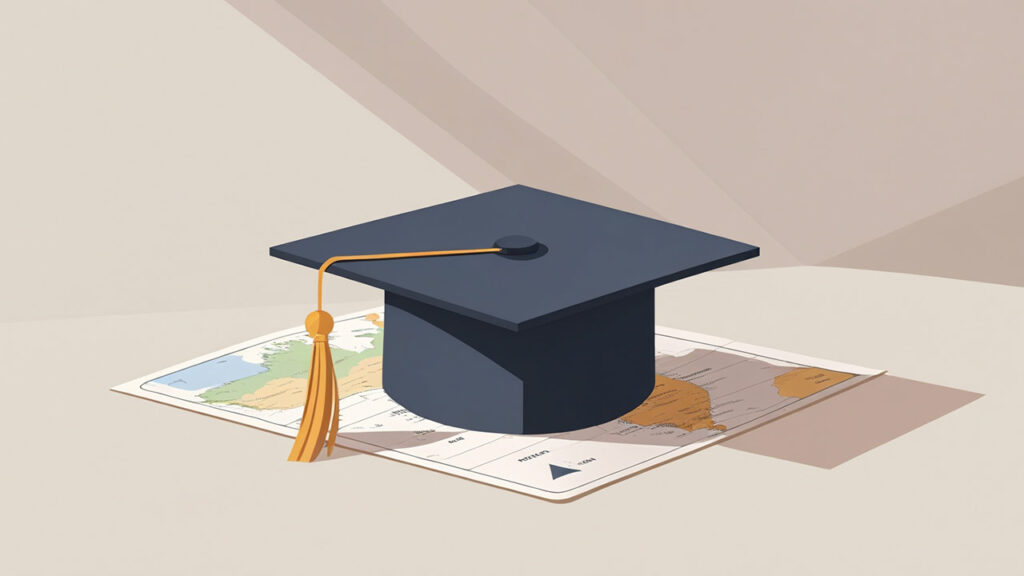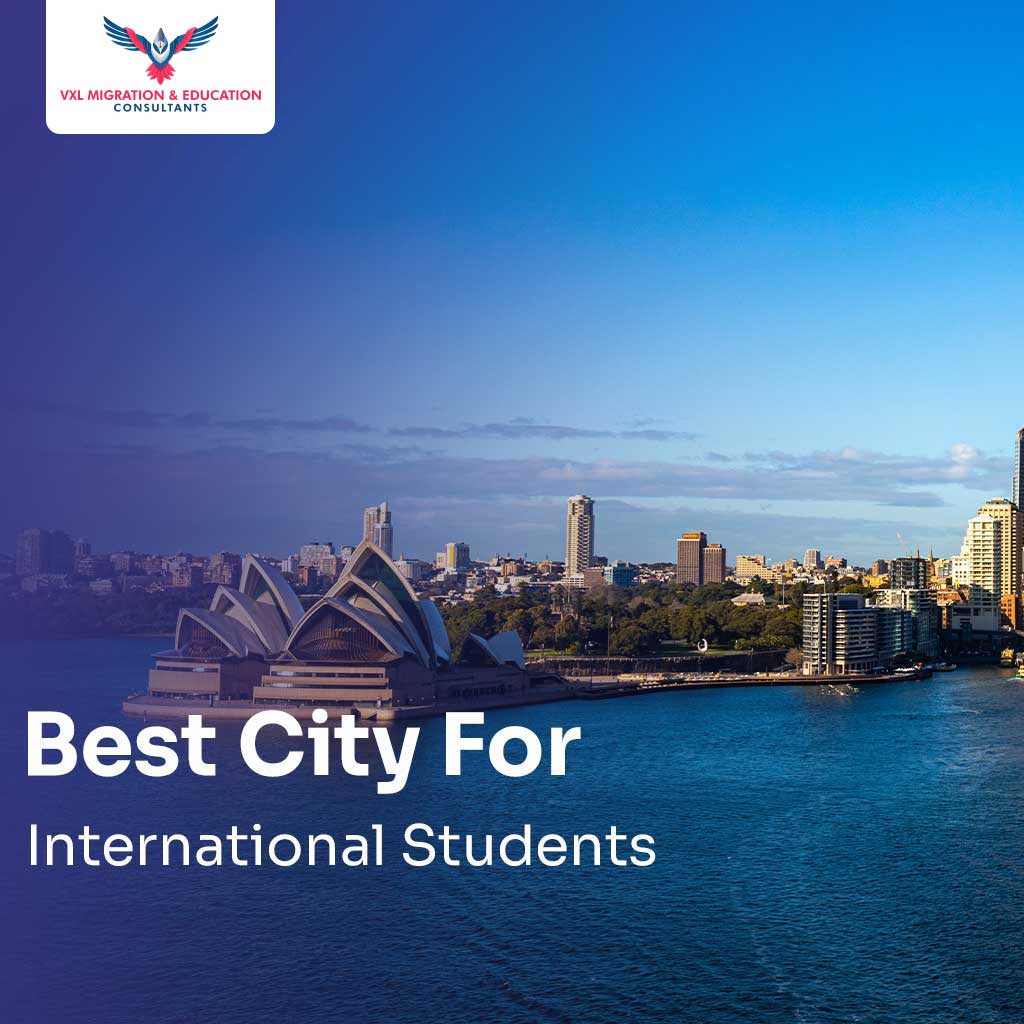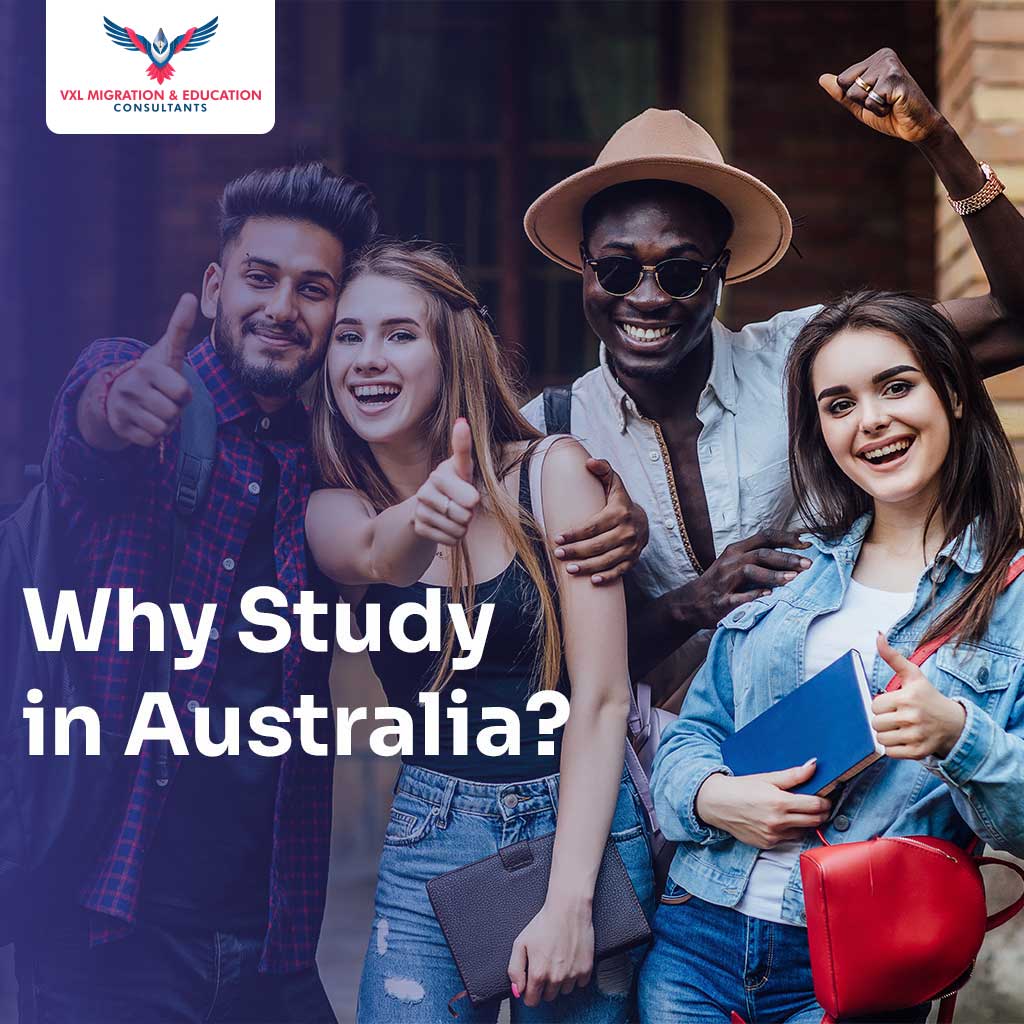Moving through the partner visa process in Australia can feel tough, since it requires following challenging steps, handing over a lot of documents, and making sure you are eligible. Getting the right advice is very important when you are either applying for an Australian partner visa or trying to follow the most recent changes for 2025.
This guide will explain every detail about applying for a partner visa, starting with the first requirement all the way to the acceptance of your application.
We at VXL Migration and Education Consultants have a good grasp of Australian immigration law and work hard to assist couples who wish to live together in Australia.
What is an Australian Partner Visa?
Australian Partner Visas are provided so the spouse or de facto partner of a citizen, permanent resident, or eligible New Zealand citizen can move to Australia for good. This visa is designed mainly to allow couples to create a family life in Australia, in line with Australian principles.
Partner visa applicants in Australia must go through a special two-step process: Temporary and Permanent. The first step is to get a temporary visa that lets them stay and work Down Under until the department looks into their relationship. After around two years, when the relationship is still real and continuing, applicants qualify for permanent residency.
By working in this way, the Department can ensure that marriages are truly genuine and that couples stay in touch over time, and not only get married for migration purposes.
Types of Partner Visas in Australia (2025)
Australia offers several partner visa options depending on your circumstances and location when applying. Understanding these options is essential for any Australian partner visa application:
Subclass 820/801 (Onshore Partner Visa)
This two-stage visa is for applicants already in Australia. The Subclass 820 is the temporary visa granted first, followed by the Subclass 801 permanent visa after approximately two years.
Subclass 309/100 (Offshore Partner Visa)
Designed for applicants outside Australia, this pathway also follows the two-stage process. The Subclass 309 temporary visa is granted first, with the Subclass 100 permanent visa following after the relationship assessment period.
Subclass 300 (Prospective Marriage Visa
This visa is for engaged couples who plan to marry an Australian citizen, permanent resident, or eligible New Zealand citizen. It allows entry to Australia for the purpose of marriage, with the requirement to marry within nine months of arrival.
Partner Visa Comparison Table
| Visa Type | Location | Temporary Visa | Permanent Visa | Key Requirement |
| 820/801 | Onshore | Subclass 820 | Subclass 801 | Already in Australia |
| 309/100 | Offshore | Subclass 309 | Subclass 100 | Outside Australia |
| 300 | Offshore | N/A | Must apply for a partner visa after marriage | Engaged to be married |
The key differences lie in eligibility requirements, application location, and processing pathways, making it crucial to choose the right option for your specific circumstances.
Eligibility Criteria for Applicants & Sponsors
Success in any partner visa Australia application depends on meeting strict eligibility requirements for both the applicant and the sponsor.
Eligibility Criteria for Applicants
Applicants must demonstrate several key requirements to qualify for a partner visa:
- Be in a genuine and ongoing relationship with an Australian citizen, permanent resident, or eligible New Zealand citizen
- Be married to or in a de facto relationship with your sponsor for at least 12 months (some exceptions apply)
- Meet health and character requirements through medical examinations and police clearances
- Have adequate health insurance if applying onshore
- Not be subject to any debt to the Australian government
- Meet English language requirements in specific circumstances
- Provide evidence of the genuine nature of your relationship through joint finances, shared accommodation, social recognition, and commitment to a shared life
Eligibility Criteria for Sponsors
Australian sponsors must also meet specific requirements:
- Be an Australian citizen, Australian permanent resident, or eligible New Zealand citizen
- Be at least 18 years of age
- Meet character requirements and provide police clearances if requested
- Not have sponsored more than one other person for a partner visa (unless exceptional circumstances apply)
- Not be subject to any adverse information that would affect the application
- Provide adequate support and accommodation for the applicant
- Have not been convicted of violent or sexual crimes (with some exceptions)
- Sign a statutory declaration confirming the genuine nature of the relationship
Partner Visa Application Documents Checklist
Comprehensive documentation is the foundation of any successful partner visa application. The importance of detailed, consistent, and well-organised documentation cannot be overstated, as inadequate evidence is one of the primary reasons for visa refusals.
Identity and Relationship Documents:
- Certified copies of passports, birth certificates, and identity documents
- Marriage certificate or evidence of de facto relationship
- Joint bank statements and financial records
- Lease agreements or property ownership documents showing shared accommodation
- Joint utility bills, insurance policies, and other shared financial commitments
Relationship Evidence:
- Photos together spanning the relationship timeline
- Travel documents showing trips taken together
- Social media evidence and communication records
- Statutory declarations from friends and family recognising the relationship
- Evidence of joint social activities and shared interests
Legal and Character Documents:
- Police clearances from all countries lived in for 12+ months since age 16
- Statutory declarations addressing any character concerns
- Court documents, if applicable
Health and Insurance:
- Health examination results from approved panel physicians
- Adequate health insurance evidence
- Medical records addressing any health conditions
Financial Documents:
- Evidence of financial capacity to support the relationship
- Employment letters and income statements
- Tax returns and financial statements
How to Apply for an Australian Partner Visa?
The partner visa application process involves several critical steps that must be completed accurately and thoroughly.
Gather Documents
Check each document and add its certified copies to the checklist. Arrange your papers in order of when they were created and with similar content to reflect how your relationship changed. It generally takes 2-3 months in this preparation phase, which is very important for your application.
Submit Sponsorship Application
Before anything else, your partner in Australia must sponsor you by showing they qualify for the role and giving details about your relationship. At this point, you complete Form 40SP and supply proof of the sponsor’s background, history of relationships and current circumstances.
Fill Out the Visa Form
Complete the appropriate visa application form meticulously. For applications onshore, you should use Form 47SP, and for applications offshore, use Form 47SP. All forms and supporting paperwork should agree and include correct information. Mistakes in your paperwork might cause delays or your application to be rejected.
Pay Fees
Submit the required visa application fee through the Department’s official payment system. As of 2025, fees are substantial, so ensure you have adequate funds available. Payment confirms your application submission and initiates the processing timeline.
Submit via ImmiAccount
Lodge your complete application through the Department’s online ImmiAccount system. Upload all documents in the correct format and ensure file sizes meet system requirements. Keep detailed records of your submission for future reference.
Health Exams and Biometrics
Go to your approved health examinations and offer any biometric records when the panel requests them. As soon as an appointment request comes, arrange it as early as possible, because any delay can lengthen how long it takes to process.
Monitor Status
Always use ImmiAccount to monitor the progress of your application and answer quickly when requested. Check and update your online personal details and inform the Department if your situation changes.
Receive Decision
When a decision is given, it will be shared with you by email and shown on your ImmiAccount. Should your application be approved, go over all the rules of your visa and meet the ongoing conditions.
Costs Involved in a Partner Visa Application
Understanding the financial commitment involved in the partner visa application fee structure for 2025 is essential for planning purposes. The costs extend beyond the basic application charge and can vary significantly based on individual circumstances.
Primary Visa Application Charges (2025):
- Onshore Partner Visa (820/801): AUD $8,850
- Offshore Partner Visa (309/100): AUD $8,850
- Prospective Marriage Visa (300): AUD $8,850
Additional Costs:
- Health examinations: AUD $300-600 per person, depending on age and required tests
- Police clearances: Varies by country, typically AUD $50-200 per certificate
- Document translation and certification: AUD $50-100 per document
- Immigration agent fees: AUD $3,000-8,000 depending on complexity
- Adequate health insurance: AUD $500-1,500 annually
Second Instalment Charges:
- Some applicants may be required to pay additional charges if they don’t meet English language requirements, typically ranging from AUD $4,890 to AUD $9,800.
Total costs often range from AUD $10,000 to AUD $20,000 or more, making professional guidance valuable for ensuring applications are prepared correctly the first time.
Partner Visa Processing Time
Processing timeframes vary significantly based on visa subclass, application completeness, and individual circumstances. Current estimated processing times for 2025 include:
- Subclass 820 (Temporary Onshore): 29-57 months for 75% of applications.
- Subclass 309 (Temporary Offshore): 29-57 months for 75% of applications.
- Subclass 300 (Prospective Marriage): 28-54 months for 75% of applications.
Factors Affecting Processing Times:
- Completeness and quality of the initial application
- Complexity of relationship circumstances
- Health examination delays
- Character assessment requirements
- Department workload and priority processing arrangements
- Response time to requests for additional information
Monitoring Your Application
Applicants can check their partner visa processing time and status through ImmiAccount, which provides real-time updates on application progress. The system also facilitates communication with case officers and document submission.
Expediting Processing
While most applications follow standard processing times, certain circumstances may qualify for priority processing, including compelling or compassionate situations, sponsor employment in certain occupations, or significant delays beyond published timeframes.
Common Challenges and How to Overcome Them
Understanding typical obstacles in the Australian partner visa application process helps applicants prepare more effectively and avoid common pitfalls.
Proving Genuine De Facto Relationships
Many couples struggle to demonstrate the authenticity of their relationship, particularly when they haven’t lived together continuously or don’t have joint financial arrangements. Overcome this by providing comprehensive evidence across all four relationship aspects: financial, household, social, and commitment. Document your relationship timeline thoroughly and address any gaps or unconventional circumstances with detailed explanations.
Character Requirements
Criminal history, even minor offences, can complicate applications. Be completely transparent about any character issues and provide comprehensive explanations with supporting documentation. Professional advice is critical when character concerns exist, as proper presentation can mean the difference between approval and refusal.
Health Requirements
Some health conditions may require additional assessment or management plans. Work with approved panel physicians to understand requirements and ensure comprehensive medical documentation. Some conditions may require health undertakings or ongoing monitoring.
Complex Family Situations
Previous marriages, children from other relationships, or family disagreements can complicate applications. Provide clear documentation of all family circumstances and address any potential concerns proactively.
Financial Requirements
Demonstrating adequate financial support can be challenging, particularly for sponsors with variable income or applicants unable to work. Compile comprehensive financial evidence and consider obtaining financial guarantees or support from family members if necessary.
Professional Advice is Critical When
- Character or health issues exist
- Previous visa refusals or immigration problems have occurred
- Relationship circumstances are complex or unconventional
- Significant financial investment is at stake
- Legal interpretation of requirements is needed
Benefits of the Partner Visa Australia
Having a partner visa allows many benefits that encourage couples who aim to live in Australia to apply.
Pathway to Permanent Residency (PR)
The key advantage is that you can become a permanent resident right away, without being assessed for skills, offered a job, or meeting points requirements. The pathway ensures couples can settle and feel secure about their future in Australia.
Access to Medicare
Approved partner visa holders can use Medicare, which offers important medical protection and helps relieve their concerns. Those benefits cover visits to doctors, hospital care, and prescription drugs.
Include Dependent Children
Because of the visa, children from previous relationships are allowed, keeping families united. Under the application, children are granted the same rights to stay permanently in Australia.
Eligibility for Government Benefits (in Some Cases)
Some government support services, such as emergency and crisis support, are available to students with the right circumstances and visa. People who have permanent visas are entitled to greater social security benefits once they have met the residency conditions.
Live & Work in Australia
People on a partner visa are allowed to live anywhere in the country and work in any job they want. Since couples can live and work anywhere, they are able to follow their desires across the nation.
Partner Visa Interview Preparation
While not all applicants face interviews, the Department may request interviews to assess relationship authenticity or clarify application details. Understanding the interview process helps applicants prepare effectively if required.
What to Expect in an Interview
Most interviews concentrate on understanding their relationship, what they’ve experienced together, their plans for the future, and their everyday lives. They may want to know the history of your relationship, important moments you’ve celebrated together, where you live, the state of your family life, and your cultural or religious values. Many times, questions are designed to check how deeply each person understands the other’s background, wishes, and intentions.
Types of Questions Asked
- How and when did you meet?
- Describe your daily routine together.
- What are your partner’s hobbies and interests?
- How do you handle disagreements?
- What are your future plans together?
- Tell me about your partner’s family.
- How do you manage finances together?
Interview Preparation
Review your application thoroughly and ensure consistent answers. Practice discussing your relationship timeline and significant events. Get ready to talk about how you experience and overcome cultural differences. Be open about the difficulties you have had and how you arranged a united response.
At VXL Migration and Education Consultants, we work with clients on their interview skills by providing mock interviews, sample questions, and methods for building confidence.
Post-Approval: What Happens Next?
Understanding the process after receiving your temporary partner visa is crucial for maintaining compliance and preparing for permanent residency.
Immediate Steps After Approval
Upon receiving your temporary visa (Subclass 820 or 309), familiarise yourself with all visa conditions and ensure ongoing compliance. Update your contact details with the Department and maintain adequate health insurance if required.
Pathway to Permanent Residency
Approximately 23 months after your temporary visa grant, you become eligible to apply for the permanent component (Subclass 801 or 100). The Department typically contacts you about this process, but you can also initiate the application yourself.
Maintaining Eligibility
Continue living in a genuine relationship with your sponsor and maintain evidence of your ongoing commitment. Keep records of shared activities, financial arrangements, and life developments that demonstrate relationship continuity.
Permanent Visa Assessment
The permanent visa assessment focuses on whether your relationship has continued genuinely since the temporary visa grant. Provide updated evidence of your relationship development and any significant life changes.
For 820 partner visa application holders, the transition to permanent residency represents the culmination of a multi-year process and provides the security of indefinite stay in Australia with full resident privileges.
Final Thoughts
Couples looking to settle down in Australia usually find the partner visa process the most important option. Even though the process is challenging, expensive, and time-consuming, the result offers excellent chances for building a permanent life and joining a family.
Being successful needs you to plan well in advance, keep accurate records, and generally accept support from a specialist to follow the complicated rules. It is much more important to take care in applying correctly, as refusal may result in breaking up the family, losing money, and additional trouble for future immigration.
At the heart of your goals is understanding, meeting the process, and ensuring that your relationship is real. If couples get proper advice and support, they can successfully start their life in Australia.
Get Personalised Partner Visa Application Support From VXL Migration and Education Consultants
There is no denying that partner visa applications are difficult, since they involve a lot of rules and paperwork and are important for every step of your future Down Under. You don’t have to face this important journey on your own – the experts at VXL Migration and Education Consultants can help you all the way.
With great experience in Australian immigration law, our expert agents have assisted many couples to settle as a pair in Australia. We tailor our support, prepare your case thoroughly, and stay with you from the start all the way through to complete the process.
Contact VXL Migration and Education Consultants right away to book your appointment and journey towards living in Australia. Your success at having a happy ending depends on getting expert advice for your love story.
Frequently Asked Questions
Can I work while my partner visa is being processed?
You can still work on your existing Australian visa while you apply for a partner visa, provided you have a valid visa. If your visa runs out before your partner visa is ready, a temporary bridging visa will be provided, normally permitting you to work.
How do I prove a de facto relationship?
If you wish to prove a de facto relationship, you should show evidence in four areas: money and expenses (joined bank accounts, both paying bills), living arrangements (household duties and accommodations), personal matters (other people recognisng you) and plans for the future (how serious you are about the relationship).
Can I include children in the application?
Yes, you can include dependent children in your partner visa application. This includes your own children or your partner’s children who are under 18, unmarried, and financially dependent on you or your partner.
What happens if we break up?
A rejected visa application or the cancellation of your temporary visa is possible if your relationship ends before you get permanent residency. Yet, if the relationship ended because of domestic violence or factors outside of your control, things can be different.
Do I need to translate all documents?
All documents not in English must be translated by a qualified translator. The translation must be accompanied by a statement from the translator confirming their qualifications and the accuracy of the translation.
What are the new rules for the partner visa in Australia?
Recent changes include updated processing priorities, revised health requirements, and enhanced relationship assessment criteria. The Department continues to focus on genuine relationship assessment and character requirements.
What are the stages of a partner visa?
Partner visas begin with a temporary permit (820 if inside Australia or 309 if outside) and lead to a permanent visa (801 inside Australia or 100 outside) after approximately two years if your relationship still meets the requirements.






